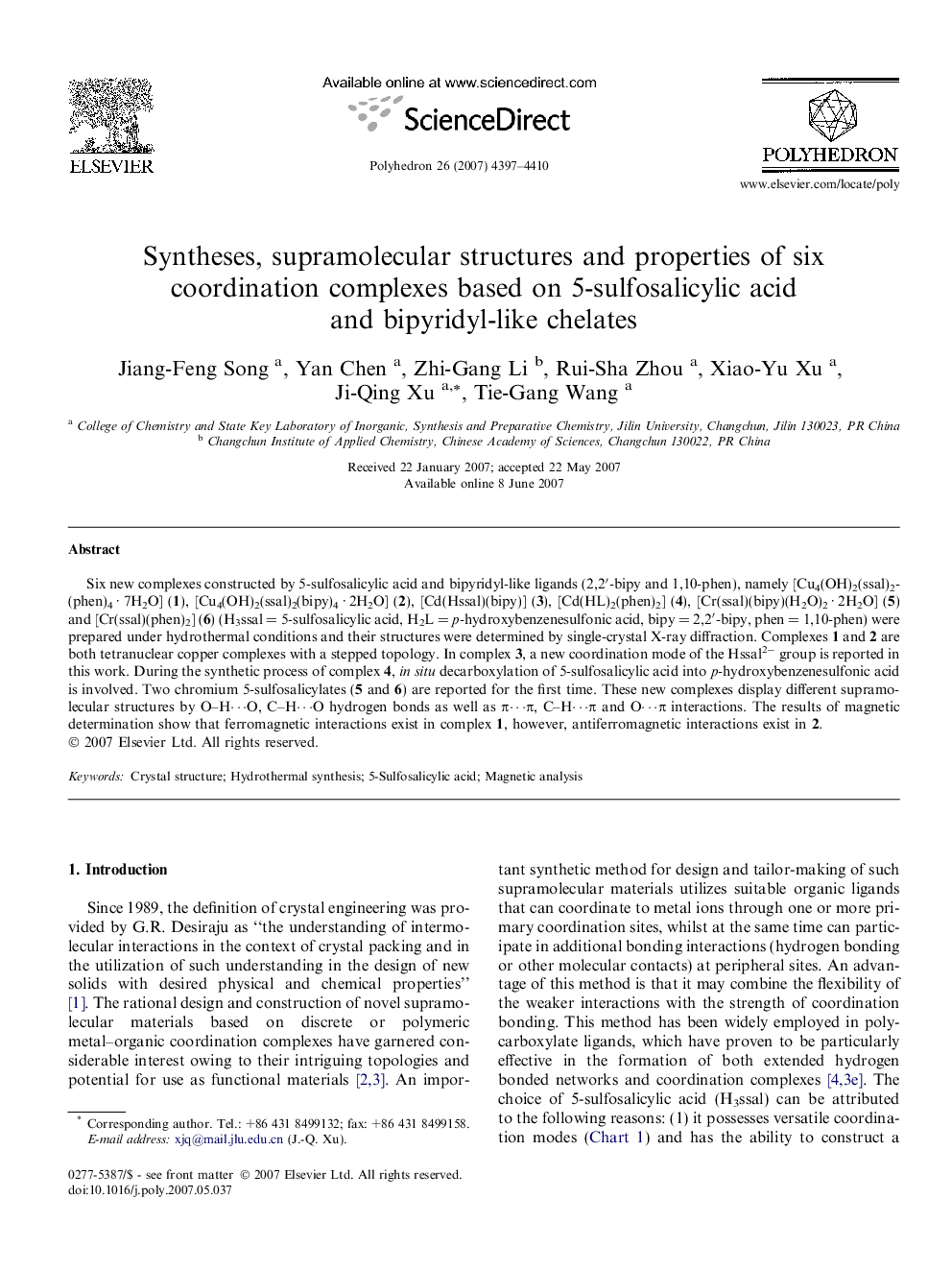| کد مقاله | کد نشریه | سال انتشار | مقاله انگلیسی | نسخه تمام متن |
|---|---|---|---|---|
| 1338321 | 979663 | 2007 | 14 صفحه PDF | دانلود رایگان |

Six new complexes constructed by 5-sulfosalicylic acid and bipyridyl-like ligands (2,2′-bipy and 1,10-phen), namely [Cu4(OH)2(ssal)2(phen)4 · 7H2O] (1), [Cu4(OH)2(ssal)2(bipy)4 · 2H2O] (2), [Cd(Hssal)(bipy)] (3), [Cd(HL)2(phen)2] (4), [Cr(ssal)(bipy)(H2O)2 · 2H2O] (5) and [Cr(ssal)(phen)2] (6) (H3ssal = 5-sulfosalicylic acid, H2L = p-hydroxybenzenesulfonic acid, bipy = 2,2′-bipy, phen = 1,10-phen) were prepared under hydrothermal conditions and their structures were determined by single-crystal X-ray diffraction. Complexes 1 and 2 are both tetranuclear copper complexes with a stepped topology. In complex 3, a new coordination mode of the Hssal2− group is reported in this work. During the synthetic process of complex 4, in situ decarboxylation of 5-sulfosalicylic acid into p-hydroxybenzenesulfonic acid is involved. Two chromium 5-sulfosalicylates (5 and 6) are reported for the first time. These new complexes display different supramolecular structures by O–H⋯O, C–H⋯O hydrogen bonds as well as π⋯π, C–H⋯π and O⋯π interactions. The results of magnetic determination show that ferromagnetic interactions exist in complex 1, however, antiferromagnetic interactions exist in 2.
Six new complexes constructed by 5-sulfosalicylic acid and bipyridyl-like ligands, namely, [Cu4(OH)2(ssal)2(phen)4 · 7H2O] 1, [Cu4(OH)2(ssal)2(bipy)4 · 2H2O] 2, [Cd(Hssal)(bipy)] 3, [Cd(HL)2(phen)2] 4, [Cr(ssal)(bipy)(H2O)2 · 2H2O] 5 and [Cr(ssal)(phen)2] 6, were prepared under hydrothermal conditions. The results of magnetic determination show that ferromagnetic interactions exist in complex 1, however, antiferromagnetic interactions exist in 2. Complexes 3 and 4 exhibit intense green and blue photoluminescence, respectively.Figure optionsDownload as PowerPoint slide
Journal: Polyhedron - Volume 26, Issue 15, 20 September 2007, Pages 4397–4410